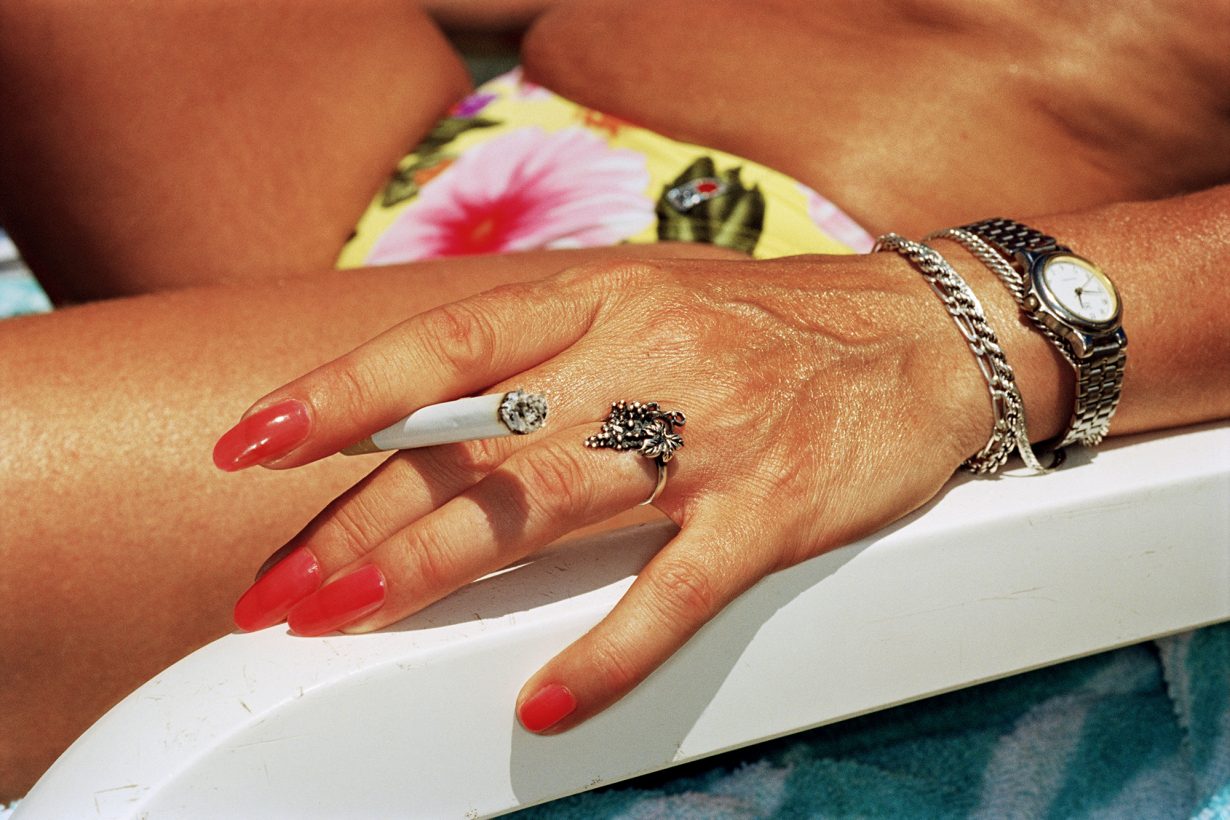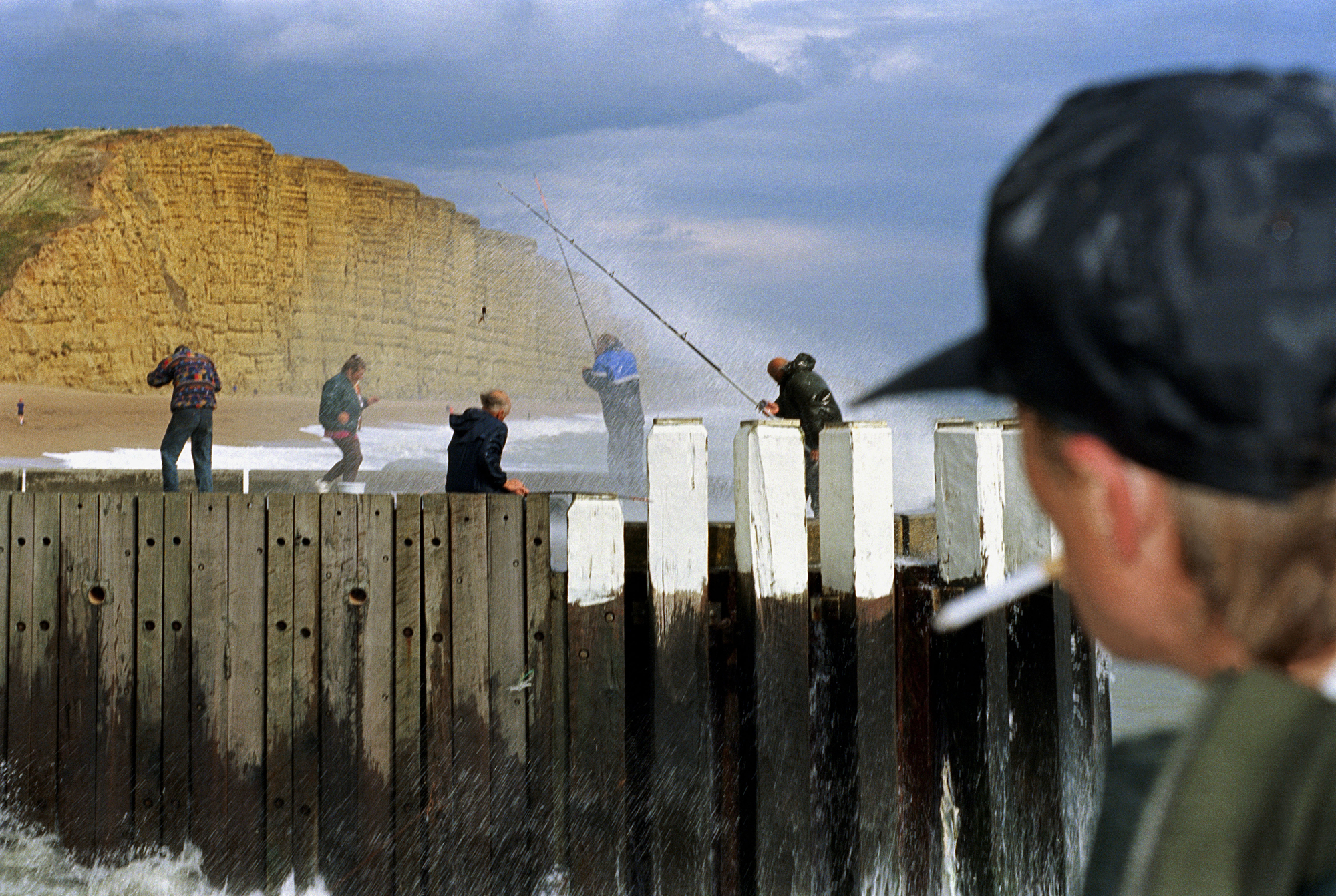No Smoking at Rocket Gallery, London draws from five decades of Parr’s career – with some added toxic flavour
Clustered together, 30 or so cigarettes protrude from a dish of sand, filling the pictorial frame like brash orange and white shoots. Some are stained with pink lipstick; others are misshapen from being stubbed out. All have been discarded by their consumers. Florida, USA (1998) opens No Smoking with an ash-dirtied tone of disgust. In the main gallery downstairs the show delves under the sand to reveal the diverse users of these stimulants. Drawn from five decades of British photographer Martin Parr’s career, the selection for No Smoking contributes necessary visual stimulus to current debates in the UK about prohibiting the purchase of tobacco by anyone born after 2009. Smoking habits have already changed drastically since smoking was banned in enclosed public places in 2007. Parr’s characteristic use of flash and saturated colour unearth these bygone moments, adding an affable hue to increasingly vilified habits.

Set in Thatcher’s Britain, photographs from Parr’s series The Last Resort (1983–85) reveal the interior lives of holidaymakers in New Brighton, Merseyside. The activity of smoking adds toxic flavour to the vision of a scruffy northern seaside resort, captured during a period of economic readjustment. New Brighton, England (1985) shows an elderly couple seated opposite each other in a dreary café. The suited man looks through the woman, while the woman avoids his gaze. A cigarette flops from his mouth, the faint suggestion of chemical-induced pleasure in his expression. Similarly bleak is New Brighton, England (1984): four figures push slot machines in a washed-out betting parlour. The woman closest to the foreground gazes ahead with her mouth wide open, engrossed in the game. In the mouth of her neighbour, a cigarette hangs unhandled.
Elsewhere, smoking orchestrates social rhythms, and underscores Parr’s knack for composition and colour. Voyeur to one woman’s habit, we view her from behind, the side of her face closely depicted (Basel, Switzerland, 1997). The protagonist holds a cigarette between her first and second fingers, ash accumulating on the tip, ready to topple, the angle of the cigarette mimicking the red-white strip lights in the background, which are then reflected in her spectacles.

Human interaction is structured by the act of smoking. The lone pipe smoker in Margate, Kent, England (1986) dozes blissfully in a deckchair, at a distance from three fellow holidaymakers in a row behind. In Aoife and Shane’s Wedding, Waterford, Ireland (2011), an elderly lady carefully lights a cigarette for a friend sitting next to her. Slightly out of focus, the blur adds movement to the cradling of hands, thumb pressed on the lighter. Companionship burns in this interstice between flame and cigarette.
Cigarettes are tactile things, of course. Space Coast, Florida, USA (1996) is a closeup of a cigarette between two fingers. Every wrinkled line of the woman’s leathery skin – cooked by heat and tobacco – is visible, against a tie-dye shirt that features a large red heart. Benidorm, Spain (1997) similarly zooms in on a woman’s cigarette-holding hand, but here the sunbather exudes manicured effort – artificial tan, acrylic nails and patterned bikini. The overall effect is ghastly, devoid of beauty.
Depictions of smoke itself are noticeably absent, perhaps to ensure that through such pictorial clarity culture can be documented, in all its cherry reds, custard yellows and coffee creams. Juicy tones and striking imagery used throughout the exhibition reveal the significance of smoking to Western culture, and rules cannot easily silence human habits and histories – an idea ironically conveyed by the large ‘No Smoking’ sign printed on one of the walls. It seems that cigarettes are not mere accessories to be discarded as stubs in the sand, after all.
No Smoking at Rocket Gallery, London, through 31 May
From the March 2025 issue of ArtReview – get your copy.
